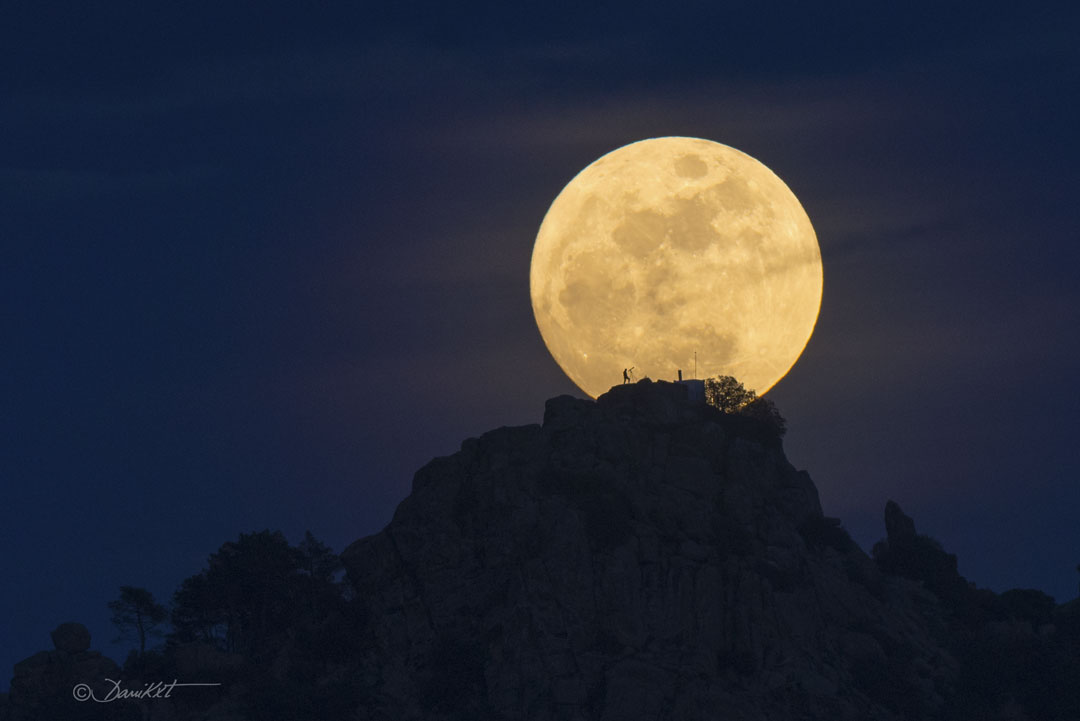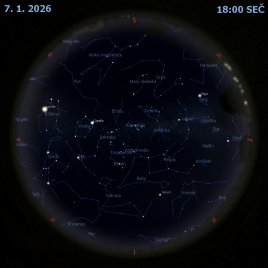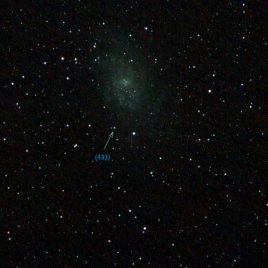Najděte Člověka na Měsíci

Uznání a copyright: Dani Caxete
Viděli jste někdy film Člověk na Měsíci? Tato častá otázka si hraje se schopností lidí vidět pareidolii, schopnost představovat si dobře známé obrazy tam, kde ve skutečnosti nejsou. Na strukturovaném povrchu pozemského Měsíce v úplňku jsou mnohé takové ikonické objekty a nejen v moderní západní kultuře, ale ve světovém folkloru po celé dějiny. Mezi takové příklady, které obvykle závisí na vnímané orientaci Měsíce, patří Žena na Měsíci a Králík na Měsíci. Jeden z takových obrysů obličeje, který se běžně označuje jako Člověk na Měsíci, začíná představou dvou tmavých kruhových oblastí měsíčních moří, zde těsně nad středem Měsíce, které představují oči. Překvapivě je na tomto snímku Měsíce skutečně vidět člověk, při bližším pohledu uvidíte skutečnou osobu s dalekohledem v siluetě proti Měsíci. Tento dobře naplánovaný snímek byl pořízen v roce 2016 v Cadalso de los Vidrios v Madridu ve Španělsku. Máte na Měsíci nějaký oblíbený objekt, na který se díváváte?
Seznam odkazů v popisu
- Wikipedia: Pareidolia
- APOD: 2018-06-24 Stín kouře raketoplánu miří k Měsíci
- Wikipedia: Moon_rabbit
- NASA: Earth's Moon
- Blogspot.com: Lunar Pareidolia Test
- Mexicolore.co.uk: A Rabbit in the Moon?
- Wikipedia: File:Man_in_the_Moon_with_key.jpg
- Wikipedia: Man_in_the_Moon
- NASA: Moon Map
- Wikipedia: File:Moon_names.svg
- PinImg.com: Foto: Překvapená kočička :-)
- APOD: 2014-01-13 Cesta na Měsíc
- APOD: 2014-09-07 Siluety v úplňku
- Wikipedia: Cadalso_de_los_Vidrios
- Wikipedia: Community_of_Madrid
- Wikipedia: Spain
- Apod.com: Find the Man in the Moon (2022 Jun 12)
NASA Official: Phillip Newman Specific rights apply. NASA Web Privacy Policy and Important Notices
A service of: ASD at NASA / GSFC & Michigan Tech. U.
Odkaz na originální APOD


